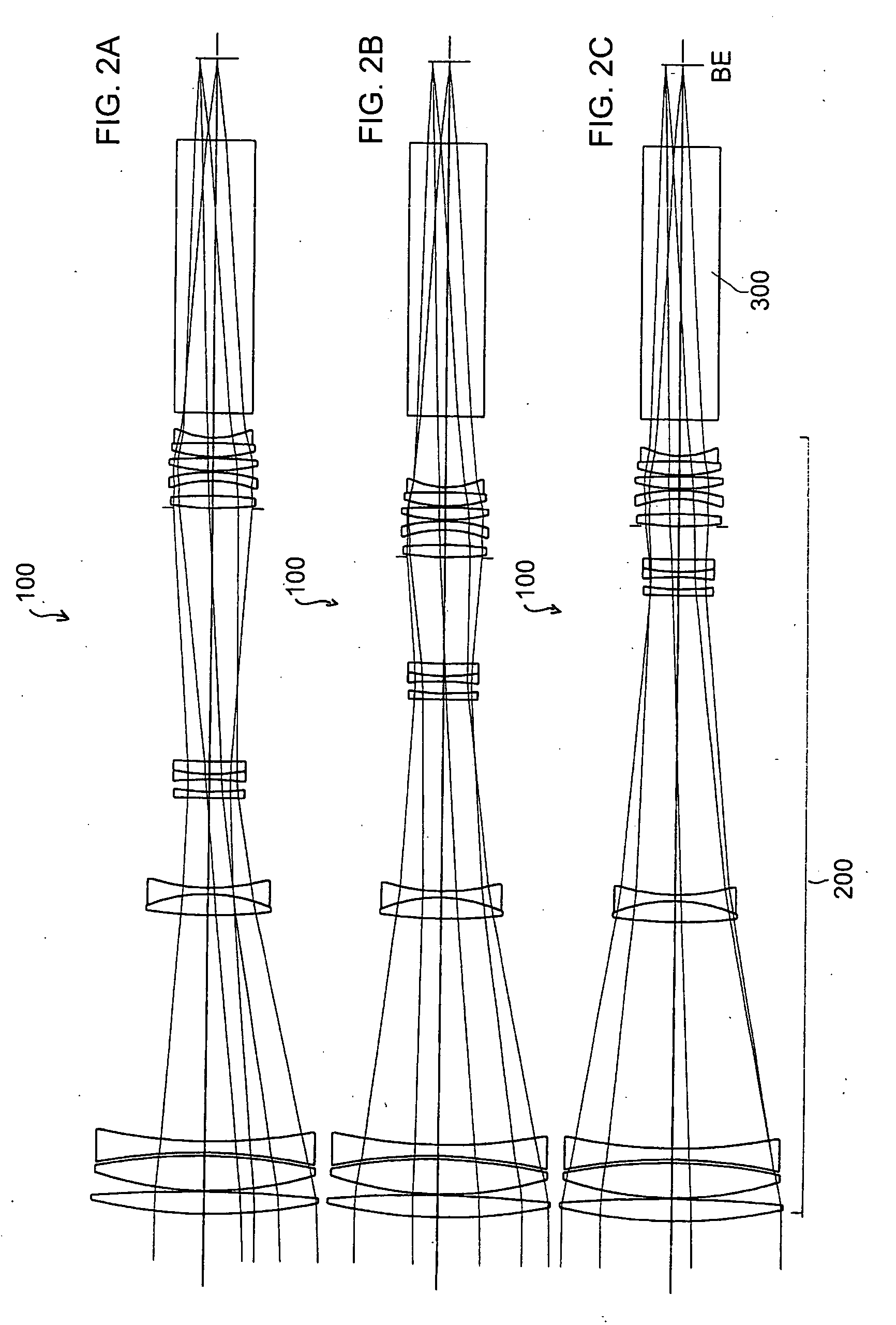Optical system
- Summary
- Abstract
- Description
- Claims
- Application Information
AI Technical Summary
Benefits of technology
Problems solved by technology
Method used
Image
Examples
Embodiment Construction
[0037]FIGS. 1A through 1C show a schematic illustration of a embodiment of a telescope 100 according to the system described herein. The telescope 100 may include an optical system in the form of an objective 200, a prism reversal system 300, and an ocular 400. The prism reversal system 300 may additionally be implemented as a beam splitter for dividing incident beams into two partial beam paths. FIGS. 1A through 1C show various settings of the individual optical units of the telescope 100, i.e., the objective 200, in which various magnifications may be achieved. This is discussed in greater detail below.
[0038]The objective 200 may have a variable focal length. For example, the objective 200 may be designed for a focal length range from approximately 166.7 mm to approximately 500 mm. For example, if the ocular 400 having a focal length of approximately 11.1 mm is selected, the telescope 100 will have a variable magnification from approximately 15× to approximately 45×. However, if o...
PUM
 Login to View More
Login to View More Abstract
Description
Claims
Application Information
 Login to View More
Login to View More - R&D
- Intellectual Property
- Life Sciences
- Materials
- Tech Scout
- Unparalleled Data Quality
- Higher Quality Content
- 60% Fewer Hallucinations
Browse by: Latest US Patents, China's latest patents, Technical Efficacy Thesaurus, Application Domain, Technology Topic, Popular Technical Reports.
© 2025 PatSnap. All rights reserved.Legal|Privacy policy|Modern Slavery Act Transparency Statement|Sitemap|About US| Contact US: help@patsnap.com



